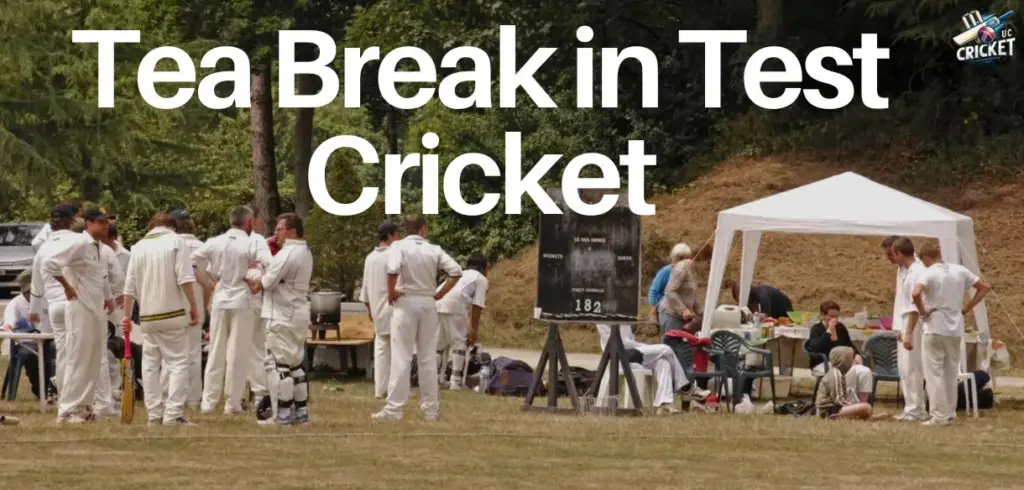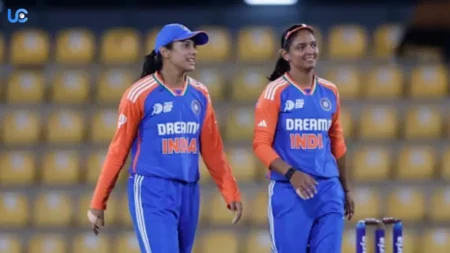Test cricket, often hailed as the purest and longest format of the game, is a grueling challenge of endurance, skill, and mental toughness. Played over five days, with each day lasting six or more hours, Test cricket includes two vital breaks: the lunch break and the tea break. The tea break, taken before the final session of the day, plays a crucial role in allowing players to regroup and recharge for the rest of the game.
In this article, we delve into the tea break in Test cricket, exploring its schedule, duration, rules, and significance. Additionally, we’ll touch upon the latest updates on how this tradition continues to shape modern Test matches.
Understanding the Structure of Test Cricket
Test cricket is known for its methodical pacing and strategic depth. Each day of play is divided into three sessions, with two official breaks:
- Lunch Break: This break, lasting 40 minutes, is typically taken after the first session of play, usually around two hours or 30 overs into the match.
- Tea Break: The second interval, the tea break, occurs after the second session and is timed approximately two hours after the resumption following lunch. It provides players with a moment to rest before the final session of the day.
Read Also:- What is RTM (Right to match card) in IPL 2025 Auction
What is a Tea Break in Test Cricket?
The tea break is an essential element of the game that allows players to rest, rehydrate, and strategize for the last session. Lasting for 20 minutes, it is shorter than the lunch break but just as crucial for maintaining energy and focus. During this time, players often enjoy light refreshments such as tea, coffee, energy drinks, and snacks.
The tea break is also a period for team members to engage in discussions about their performance and tactics, adjusting their game plan for the remainder of the day.
Below table summarizing the tea break in Test cricket:
| Aspect | Details |
|---|---|
| Definition | A break taken during a Test match to rest and regroup players. |
| Timing | After the second session, about two hours post-lunch. |
| Duration | 20 minutes. |
| Purpose | – Reassess strategies- Rest and recover- Hydrate and snack- Discuss tactics |
| Rules | – Changeable by mutual agreement due to conditions.- Immediate if an innings ends within 30 minutes of tea. |
| Importance | Essential for maintaining energy for the final session. |
Duration and Timing of the Tea Break
The tea break marks the end of the second session of a day’s play and is scheduled for 20 minutes. The final session, typically lasting two hours, begins immediately after this interval. The precise timing of the tea break can vary slightly depending on when the day’s play begins and how the game progresses, but the break generally occurs around mid-afternoon.
Flexibility in Tea Break Timing
While the duration of the tea break is fixed, the timing can be adjusted under certain conditions. According to law 11.4 of the Marylebone Cricket Club (MCC), the tea break can be changed if the on-field umpires and both captains come to a mutual agreement. This flexibility is often necessary when play is interrupted by weather conditions, bad light, or other exceptional circumstances.
Tea Break When an Innings Ends
Another important rule outlined in law 11.6.1 of the MCC states that if an innings ends within 30 minutes or less before the scheduled tea break, the interval is taken immediately. This break also includes the 10-minute interval between innings.
Read Also:- Most Wickets in a Test Match
Significance of the Tea Break in Test Cricket
The tea break is more than just a brief rest period—it serves multiple purposes that are crucial for the game:
- Regrouping and Strategy: Players and coaches use this time to assess the match situation and discuss strategies for the upcoming session. This is often when teams regroup to prepare for an all-important last push before stumps.
- Rest and Recovery: After hours of concentration and physical exertion, players need a break to recharge both mentally and physically.
- Rehydration and Nutrition: Keeping players hydrated and energized with light refreshments ensures they are ready for the demanding final session. Dehydration and fatigue are major concerns, especially in hot and humid conditions.
- Team Discussions: The break provides a critical window for team members to reassess their performance, make tactical adjustments, and plan for the remaining overs.
Impact of the Tea Break on Match Outcomes
The tea break can have a significant impact on the momentum of a Test match. Teams use this interval to fine-tune their strategies, whether they’re chasing a total, defending a lead, or trying to bowl out the opposition. A well-timed discussion during this break can lead to major shifts in tactics, often influencing the result of the day’s play or even the match itself.
Read Also:- Who is the Godfather of Cricket?
Latest News on Tea Breaks in Modern Test Cricket
While the tradition of the tea break remains largely unchanged, recent years have seen the introduction of new technologies and fitness regimes that help players maximize this short window. Many teams now rely on sports scientists and nutritionists to ensure players are adequately hydrated and nourished during the tea break. With the evolution of Test cricket, particularly in day-night matches, where different conditions affect play, the role of the tea break is even more critical.
In recent Test matches, particularly in hot climates, players have emphasized the importance of these intervals for cooling down and recuperating from long spells in the field or batting. The tea break has become not just a tradition but a vital component in ensuring the longevity and endurance required to excel in the five-day format.
Conclusion
The tea break in Test cricket is much more than a ceremonial pause in the game. It is an integral part of the match structure, allowing players to rest, recharge, and recalibrate their strategies. The 20-minute interval between the second and final sessions of play is crucial for maintaining both the physical and mental endurance required in this longest format of the game.
As Test cricket continues to evolve, the tea break remains a cherished tradition that reflects the rhythm and patience required in this sport. Whether you’re a player strategizing on the field or a fan watching from home, the tea break symbolizes a moment of respite in the relentless pursuit of excellence over five days.




